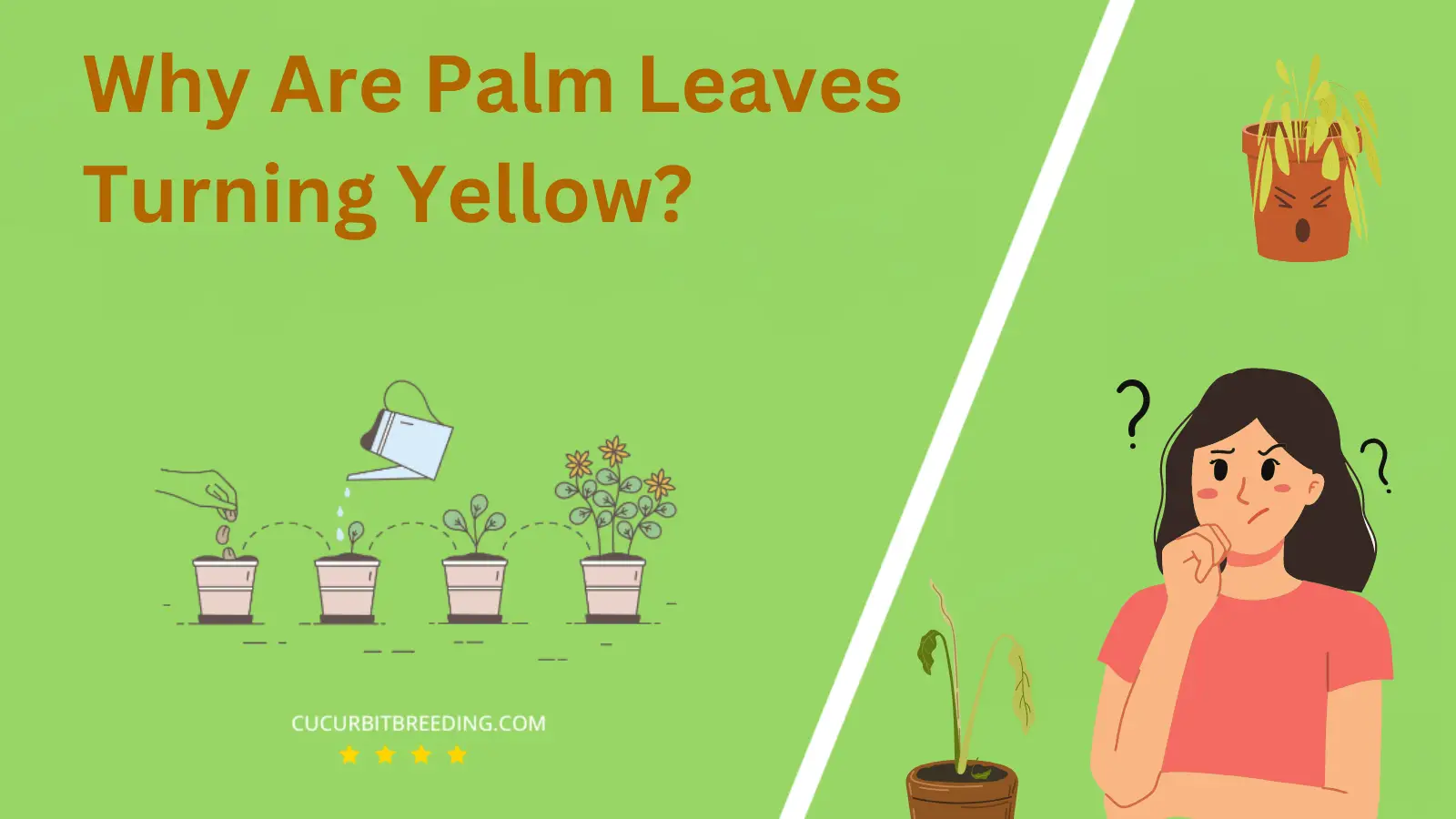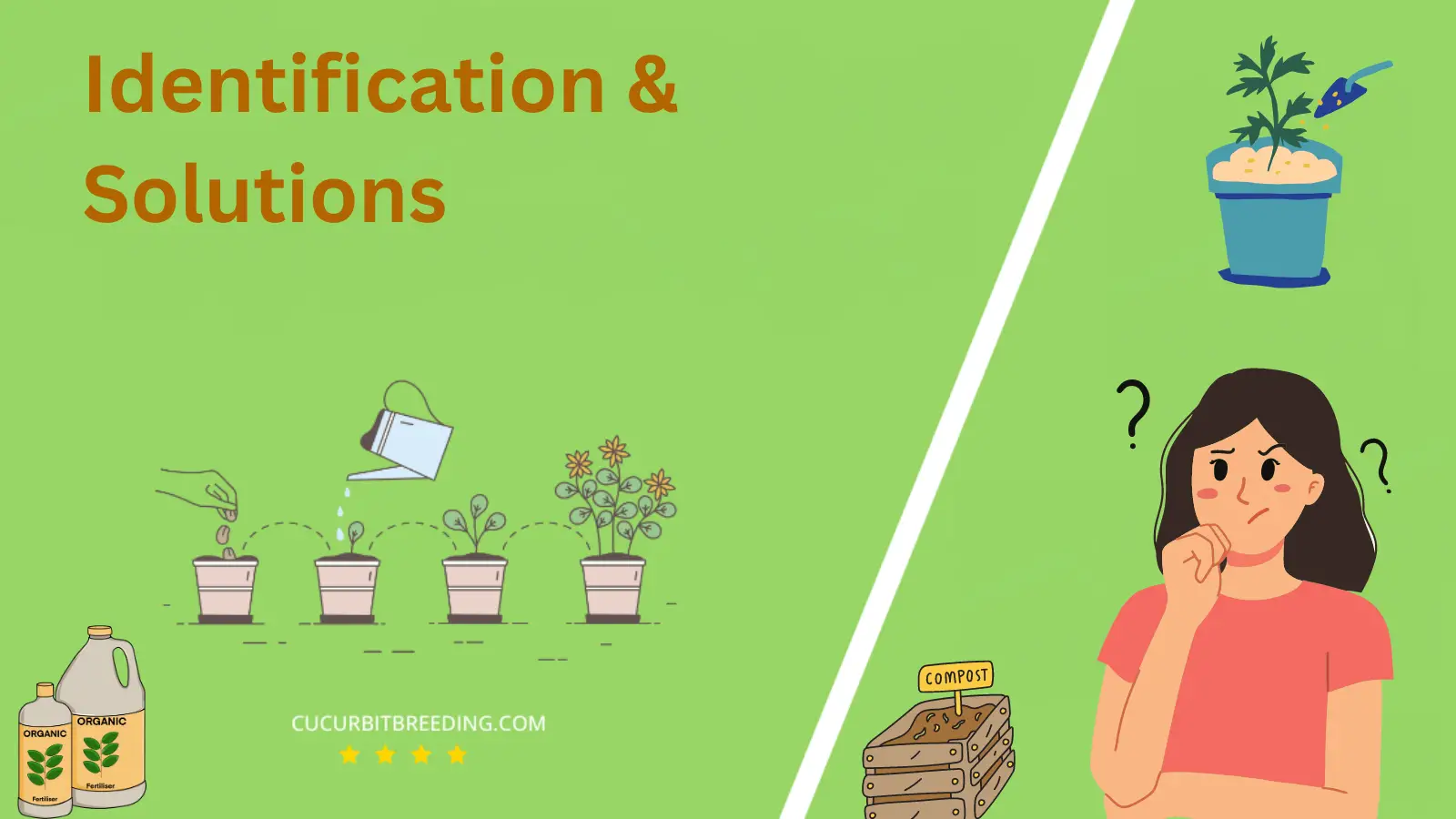
Are you witnessing an unexpected change in your vibrant green oasis? If your palm leaves are turning yellow, it could signify several issues taking place beneath the surface. A beautiful palm tree transforming to a shade of yellow is a sight that disturbs every gardening enthusiast.
Unraveling this mystery requires a close look at various factors – from water levels to nutrient deficiencies and environmental conditions. Keep reading to navigate the complex world of plant care.
Why Are Palm Leaves Turning Yellow?
1. Nutrient deficiency
| Description | Yellowing of palm leaves is caused by nutrient deficiency, which can be resolved through proper fertilization. |
|---|---|
| Solution | Apply appropriate fertilizer to address nutrient deficiency in the soil and promote healthy leaf growth. |
Nutrient Deficiency Impact on Palm Leaves
When palm leaves turn yellow, one common reason is nutrient deficiency. Essential nutrients for plant growth include nitrogen, phosphorus, and potassium. In palm trees specifically, a deficiency in magnesium or potassium can be the culprit. Without these crucial nutrients, the tree’s ability to photosynthesize is hampered, leading to the yellowing of the leaves.
Solving Nutrient Deficiency
To address the issue of nutrient deficiency, you can apply a slow-release fertilizer that’s specially formulated for palm trees. This should contain an appropriate balance of essential nutrients including magnesium and potassium. Watering the tree adequately is also crucial, as it helps with the absorption of these nutrients. Regular soil testing can help identify specific nutritional deficiencies so that you can adjust your care and fertilization practices as needed.
Preventing Nutrient Deficiency
In the long term, preventive measures are important. This can involve incorporating more nutrient-rich organic matter into the soil and ensuring the palm tree is planted in a location with proper sunlight exposure and good drainage. Monitoring your palm tree’s health and responding to issues promptly can also mitigate problems related to nutrient deficiency.
2. Overwatering
| Description | Overwatering causes nutrient imbalances, leading to chlorophyll breakdown and yellowing of palm leaves. |
|---|---|
| Solution | Reduce watering and ensure proper drainage to prevent overwatering, allowing roots to breathe and absorb nutrients. |
Overwatering is a rampant issue when it comes to houseplants like the palms and can lead to the yellowing of leaves. Palms require a balanced moisture level to thrive – not too dry and not waterlogged. Overwatering leads to waterlogged soil which can suffocate the roots, decreasing their ability to absorb necessary nutrients. This nutrient deficiency is often expressed by the palm as yellowing leaves.
To avoid this problem, it is important to implement proper watering techniques. Always ensure the soil is well drained and feel it before watering. If the top inch of the soil is still damp, wait for a couple of days before watering again. In addition, if you’re using a pot without drainage holes, consider repotting the palm into a well-draining pot. Remember, the goal is to keep the soil slightly moist, not soaked.
3. Underwatering
| Description | Insufficient water causes a lack of chlorophyll production, leading to yellowing of palm leaves. |
|---|---|
| Solution | Increase watering to ensure proper hydration and prevent yellowing of palm leaves. |
When palm plants are underwatered, they experience a form of stress that manifests as yellowing leaves. This is because water acts as a vital carrier for the plant’s essential nutrients and vitamins. Underwatering deprives the plant of these necessary components, causing it to lack the photosynthetic pigment chlorophyll, which gives it the vibrant green color. Consequently, the leaves turn yellow.
To rectify this issue, adjust your watering habits. Rather than watering on a strict schedule, check the soil’s dryness by touching it. If the soil feels dry to a depth of an inch or two, it’s time to water your palm plant. Adjusting watering habits and ensuring the plant has adequate hydration will revive the green color in the leaves. However, avoid overwatering as it can result in root rot. Using a well-draining soil can also assist in preventing water-logging. With time, patience, and proper care, your palm plant should return to its healthy, vibrant green state.
4. Pests or diseases
| Description | Insufficient water causes a lack of chlorophyll production, leading to yellowing of palm leaves. |
|---|---|
| Solution | Increase watering to ensure proper hydration and prevent yellowing of palm leaves. |
When palm leaves turn yellow, one possible cause could be an infestation of pests or the presence of diseases. Pests such as mites, scale insects, or beetles feed on the sap of the palm tree, disrupting the normal flow of nutrients and leading to yellowing of the leaves. Simultaneously, diseases like fungal, bacterial, or viral infections can block the transport of water and nutrients, resulting in the same yellowing symptom.
To combat these issues, it is essential to regularly inspect your palm tree for signs of pests or diseases. If you discover pests, consider using an organic or chemical insecticide suitable for the specific pest. If you suspect a disease, you may have to prune off the affected parts to prevent the disease from spreading, and apply suitable fungicides or antibacterial sprays to control the infection. Remember, a strong, healthy plant is less susceptible to pests and diseases, so ensure your palm tree gets enough sunlight, water, and nutrients.

5. Environmental stress (e.g. extreme temperatures)
| Description | Increase watering to ensure proper hydration and prevent yellowing of palm leaves. |
|---|---|
| Solution | Provide appropriate shade and avoid exposing the palm leaves to extreme temperatures to prevent yellowing. |
Extreme temperatures can cause yellowing of palm leaves. This happens because palms are tropical plants and have very specific temperature requirements. An environment that is too hot can cause the leaves to dry out, while an environment that is too cold can lead to frost damage. Both extremes can lead to leaf yellowing as the plant struggles to survive.
To solve this problem, it’s important to provide an optimal environment for the palm. If your palm is indoors, ensure it’s not near drafts, heaters, air conditioners, or windows where it will get an extreme temperature change. If possible, try to maintain a consistent temperature and high humidity around your palm, mimicking its natural tropical habitat.
For outdoor palms, protection from extreme cold or hot temperatures may be needed. Consider using a frost cloth during winter, or provide shade during the hottest part of the day if temperatures rise too much. Appropriate watering is key here too; dry soil can exacerbate the stress of temperature fluctuation, but overwatering is also dangerous.
6. Natural aging process
| Description | is causing chlorophyll degradation, leading to yellowing of the palm leaves. |
|---|---|
| Solution | Increase nutrient intake and provide adequate sunlight to prevent yellowing of palm leaves due to aging. |
The yellowing of palm leaves can often be attributed to the plant’s natural aging process. Like all living organisms, palm trees go through a natural life cycle where older leaves begin to yellow and eventually die off to provide room for newer, healthier growth.
This is an entirely normal process and isn’t usually a cause for concern. However, if the majority of leaves are turning yellow, or if the plant looks generally unwell, then this could indicate a health problem.
While you can’t stop the natural aging process, you can provide your palm tree with optimal care conditions to promote its overall health. Regular watering, appropriate lighting, and suitable soil conditions can help ensure longevity. It’s also important to prune off the yellowed leaves to encourage new growth and keep the tree looking its best.
7. Improper light levels
| Description | can cause a decrease in chlorophyll production, leading to yellowing of leaves. |
|---|---|
| Solution | Adjust lighting to optimal levels for growth and photosynthesis to promote healthy plant development. |
One primary reason palm leaves turn yellow is due to a deficiency in essential nutrients, particularly magnesium, potassium, and iron. These deficiencies result in the leaf’s yellowing as the nutrients are fundamental for the chlorophyll production—the green pigment responsible for photosynthesis.
To address this issue, you should first carry out a soil test to find out the nutrient levels and pH balance of the soil that your palm is planted in. If the test reveals nutrient deficiencies, you can use the results to accurately supplement the soil with the missing nutrient/s via fertilizers or compost.
It’s important to use a slow-release granular palm fertilizer that has continuous product availability for consistent nutrient supply. Avoid using fast-release fertilizers as they may cause salt injury to the palms. Also regularly ensure the pH of the soil is between 6.0 and 7.0—ideal for nutrient absorption by palms.
Iron deficiency, often resulting from high soil pH levels, can also cause palm leaves to yellow. If this is the case, applying iron chelates can help improve the situation. Remember, consistent and balanced nutrient application is key to maintaining healthy green palm leaves.